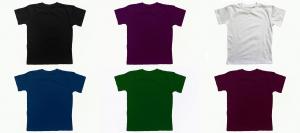Is Your T-Shirt Protected by the First Amendment?
Get Legal Help Today
Find the right lawyer for your legal issue.
Secured with SHA-256 Encryption
Mary Martin
Published Legal Expert
Mary Martin has been a legal writer and editor for over 20 years, responsible for ensuring that content is straightforward, correct, and helpful for the consumer. In addition, she worked on writing monthly newsletter columns for media, lawyers, and consumers. Ms. Martin also has experience with internal staff and HR operations. Mary was employed for almost 30 years by the nationwide legal publi...
Published Legal Expert
UPDATED: Jul 16, 2021
It’s all about you. We want to help you make the right legal decisions.
We strive to help you make confident insurance and legal decisions. Finding trusted and reliable insurance quotes and legal advice should be easy. This doesn’t influence our content. Our opinions are our own.
Editorial Guidelines: We are a free online resource for anyone interested in learning more about legal topics and insurance. Our goal is to be an objective, third-party resource for everything legal and insurance related. We update our site regularly, and all content is reviewed by experts.
UPDATED: Jul 16, 2021
It’s all about you. We want to help you make the right legal decisions.
We strive to help you make confident insurance and legal decisions. Finding trusted and reliable insurance quotes and legal advice should be easy. This doesn’t influence our content. Our opinions are our own.
On This Page

For example, in the 1969 case of Tinker v. Des Moines Independent School District, the US Supreme Court ruled that students were allowed to wear black armbands to protest the US involvement in Vietnam because the act was “akin to pure speech.”
However, the Court didn’t express its views on dress codes in general, saying “The problem posed by the present case does not relate to regulation of the length of skirts or the type of clothing, to hair style or deportment.”
A federal court in Louisiana ruled that students were also allowed to wear black armbands to protest the adoption of school uniforms.
The Second Circuit held in the Guiles v. Martineau case that a public school student has the right to wear a shirt insulting the President of the United States.
In the Guiles case, the student wore a T-shirt that depicted the head of President George W. Bush with the body of a chicken, alongside three lines of cocaine, a razor blade, and an alcoholic beverage.
Now, the Supreme Court is about to consider arguments about limits to clothing-related free-speech rights.
“Safe Space”
As the New York Times reports, Minnesota has a dress code that applies to polling places. The state says it’s trying to create a “safe space” for democracy.
The state prohibits voters from wearing to polling places t-shirts, hats, or buttons that express any political views.
Minnesota Statute § 211B.II doesn’t define what a “political” message is, but the state has directed election officials to ask that anyone wearing apparel with a political messagee remove it or cover it up.
Voters are allowed to vote regardless of what they’re wearing, but refusing to comply with the law could result in a misdemeanor conviction.
Photo ID
The case arose when the executive director for the Minnesota Voters Alliance was temporarily prevented from voting while wearing a t-shirt with a Tea Party logo and a button that advocated requiring photo IDs for voters.
The Eighth Circuit upheld the law, saying that “In order to ensure a neutral, influence-free polling place, all political material is banned.”
A dissenting judge objected that that banned shirts included ones promoting “the American Legion, Veterans of Foreign Wars, the National Rifle Association, the A.F.L.-C.I.O. and the N.A.A.C.P.,” according to the Times.
Critics of the law say that it violates the First Amendment, and that voters can be trusted not to be influenced by what others are wearing.
Speech-Free Zone
The Supreme Court will consider whether the Minnesota law is overbroad, making polling places into a “speech-free zone.”
The Court previously upheld a Tennessee law that created a 100-foot buffer zone around polling places, barring campaign signs and posters in the area.
However, the Tennessee law was aimed at campaign materials directly relevant to issues on the ballot, rather than more general “political” messages.
As the Times noted, poll workers may not always know what’s “political”:
In 2012, a young woman wearing an M.I.T. sweatshirt was stopped by a confused Denver poll worker who thought she was electioneering on behalf of Mitt Romney, a presidential candidate.
A supervisor intervened, explaining that the initials on the shirt stood for the Massachusetts Institute of Technology.
“There was only one ‘T,’ so the voter was not electioneering,” Alton Dillard, a spokesman for the Denver Clerk and Recorder’s Office, explained.
The Minnesota case is Minnesota Voters Alliance v. Mansky.
Find the right lawyer for your legal issue.
Secured with SHA-256 Encryption
Mary Martin
Published Legal Expert
Mary Martin has been a legal writer and editor for over 20 years, responsible for ensuring that content is straightforward, correct, and helpful for the consumer. In addition, she worked on writing monthly newsletter columns for media, lawyers, and consumers. Ms. Martin also has experience with internal staff and HR operations. Mary was employed for almost 30 years by the nationwide legal publi...
Published Legal Expert
Editorial Guidelines: We are a free online resource for anyone interested in learning more about legal topics and insurance. Our goal is to be an objective, third-party resource for everything legal and insurance related. We update our site regularly, and all content is reviewed by experts.
